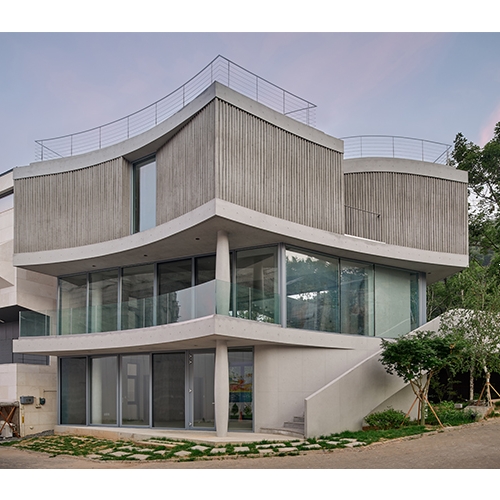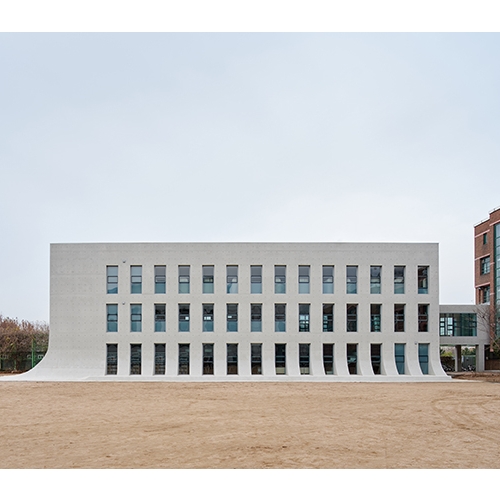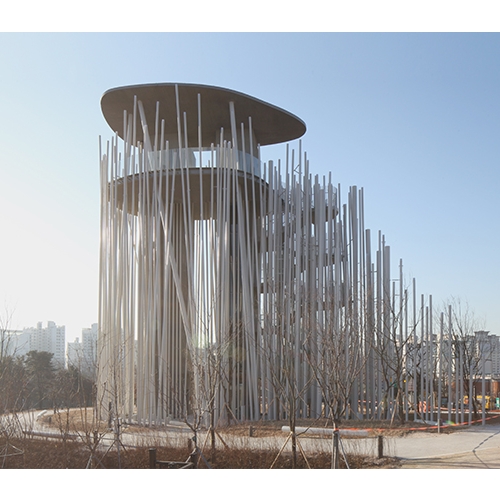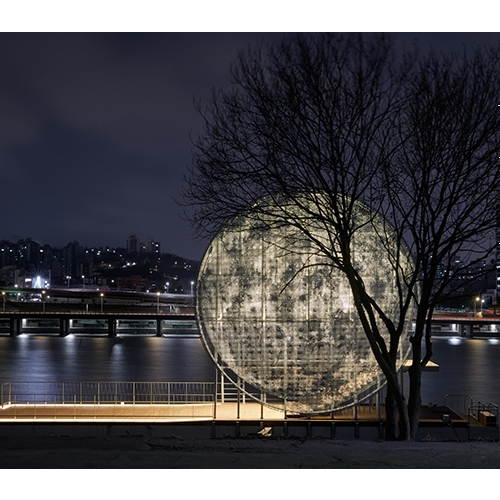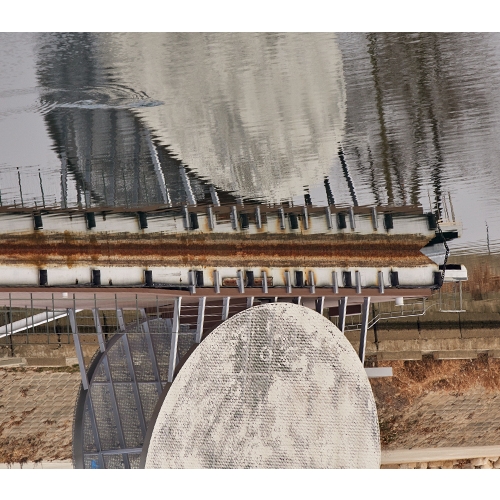NAMELESS Architecture has carried out more than 100 projects over the past 12 years. Ranging from architecture, furniture, exhibitions, artworks, to publications, these projects are diverse in terms of their scale, character, and focus. What is the connection between S Library, Dialogue, Growing Forest, and Halo Nodeul — works that are covered here — and their earlier projects? What direction is NAMELESS Architecture presently pursuing? Here is the roundtable about their past, present, and future with Kim Soo-young, Yim Dongwoo, and Chung Soyoung.
Na Unchung, Yoo Sorae co-principals, NAMELESS Architecture × Kim Soo-young principal, su:mvie architects × Yim Dongwoo professor, Hongik University × Chung Soyoung visual artist
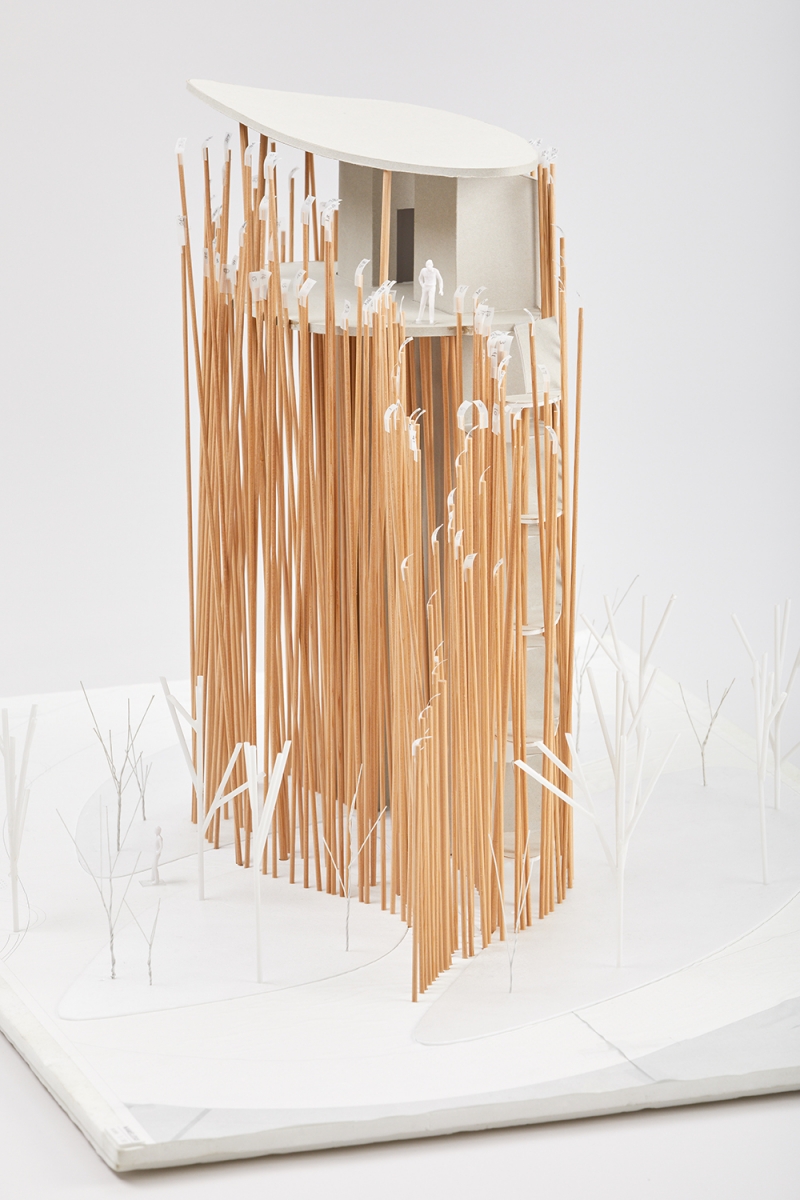
Model of Growing Forest
Is this One by NAMELESS Architecture?
Yim Dongwoo (Yim) These projects look different. If I simply passed it on the street, without forewarning, I wouldn’t have realised that it had been designed by NAMELESS Architecture. It was very different from their previous works due to their new approach and a number of variations that had not been present before. It is surprising that such a transformation could occur over only a decade in the work of a small team. After following a focused direction for decades, it was only in his final years that Le Corbusier attempted a new approach, and a turning point like this has already occurred for NAMELESS Architecture.
Na Unchung (Na) I can’t tell if this is an insult or a compliment. (laugh)
Yim It’s not an insult; rather, it means that you can retire now. (laugh) I’m kidding. Of course, this change was possible not because ten years had passed, but because you had accumulated such a wealth of experience across your numerous projects.
Kim Soo-young (Kim) I was also puzzled by the fact that these projects were performed by NAMELESS Architecture as I was visiting them. Dialogue, Growing Forest, and Halo Nodeul appeared immaterial―but I had always thought work by NAMELESS Architecture were from concrete. It’s probably because you used vocabulary like that of the constructive. However, I feel that there is a new narrative that is being added here; it seems like the know-how NAMELESS Architecture has accumulated over time has been used to establish a different spatial narrative, and I can see that in these architectural works. If the previous projects were formed from a constructive manifesto, the latest projects appear to be the manifestation of allegory. It may be closer to what they want to do. The reason that these projects don’t feel like something formed by NAMELESS Architecture is because your range of works have expanded to such a degree.
Chung Soyoung (Chung) Personally, I’m interested in the voids and empty spaces in these projects. To create an inner courtyard, a space was dug out at the centre of Dialogue while leaving other spaces behind; in the Growing Forest, an empty space created by the columns can be observed between their vertical lines, and Halo Nodeul is interesting in that it uses perforated panels as the material to create a point of emptiness within the urban space. Of course, this is just a personal opinion, but I think that the sense of balance created out of this act of emptying sometimes oscillates between humour and deconstruction.
Yim The projects by NAMELESS Architecture are extremely modern. They are developed in the language of modernists, but if one looks closer, one can also find evidence of elements that go beyond that language, and I think that such points can be found in their constructive approach. To put it in a broader perspective, architecture until recently was mostly composed of column, slab, and free façade. The Dom-ino System designed 100 years ago is still as relevant today. There have been some attempts made with the creation of a more experimental façade, but no matter how they tried, they always remained as reflections of the original construction system. But nowadays, regardless of whether in the local or international scene, we observed a trend that poses fundamental questions like: ‘why should we build with columns and slabs’, ‘is façade-design architecture’, ‘is architecture about mass-design’, and so on. These questions are often noted in the discourse of this generation either in the form of self-posed reflections or influences in their projects. It seems that this generation is founded on instinctive reactions against modernism. Considering this, I think that there are many intriguing points from the perspective of construction to be considered in these projects by NAMELESS Architecture.
Na S Library and Dialogue are both projects that have expanded the material possibility of concrete. Exceeding the rigid surface of the concrete cast method, we wanted it to take on a more streamlined form. On the other hand, as public art installations, there is greater freedom in terms of the programmes proposed for Growing Forest and Halo Nodeul, and so it was possible to try something new with them. In the case of Halo Nodeul, for example, instead of approaching the theme ‘moon’ in material terms, we began with another question: ‘what is the lyric emptiness of a city’. We also actively incorporated the steel structure for the first time in Growing Forest, however this was not about experimenting with new materials but with a deliberate design resulting from our contemplation of forest, nature, and artificial objects.
Yim The previous project Triangle School (2015) was a variation on the architectural theme of a school. If it could be said that you tried to introduce variety in your projects by devising something different from what is familiar or common to your work, it seems that you are now trying to bring about a variation within the project itself in your recent work.
Na At that point in time, the question ‘what is a good educational space’ felt like it required a more specific answer. It was a project that was based strictly on a given programme. Similarly, in the AeLe House with 9 Rooms (2017), questions like ‘what does it mean to reside’ or ‘how do we live?’ were posed in order to avoid the typical residential space.
Yoo Sorae (Yoo) We also wanted to distort the typical form of an observatory, that is the vertical tower, in the design of Growing Forest.
Na The starting point is often a doubt, a question directed at something familiar. ‘Is this right?’ I question myself: ‘is this programme and form tackling the essential?’
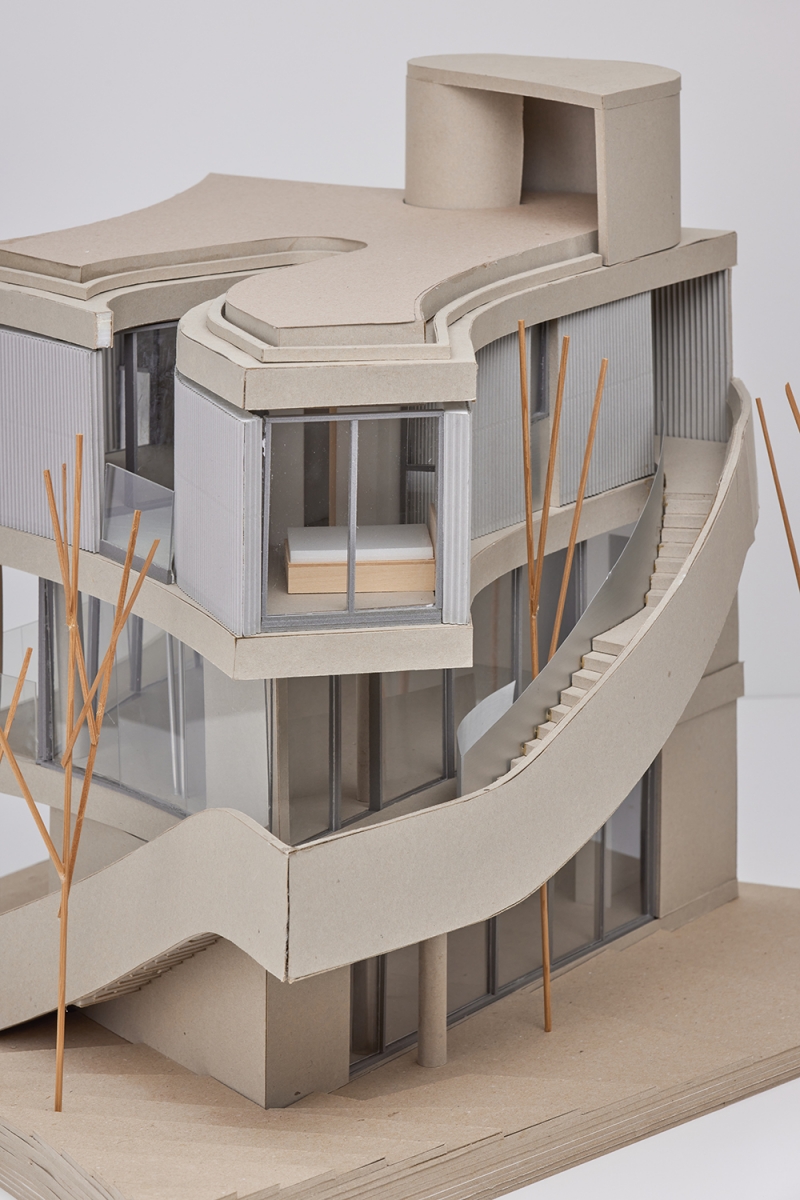
Model of Dialogue
Is It OK to Leave It Disordered?
Yoo Artist Chung Soyoung cooperated with us on Growing Forest. Some ask, ‘what did you (the architect) do, and what did Chung (the artist) do?’, expecting an answer like ‘the architect made the form, and the artist added the colours’. But we worked together even at the ideas stage. We developed it through conversations and discussions. As we worked with Chung, we realised that it was fine to be more laid back and loosened up. We realised how strong our tendencies were to tidy up and subject ourselves to constraints.
Na Growing Forest was an opportunity for us to reflect on the function of the architect. As we worked with someone as free spirited as Chung, we realised how architects were always in search of order, logical thinking, and structure. This is because an architect has to think about everything from conception to its realisation. However, Chung challenged us with the more liberal perspective that one could also be much looser.
Chung Was that true? It felt as natural as breathing for me. (laugh) In my view, the boundary between looseness and clarity does not arise from the thought ‘since architecture is by nature orderly, why not go for something disorderly this time?’. I think that this new equilibrium reached after reorganizing the deconstructed is something we all come to naturally. However, it is this very decision, of where we want this equilibrium between deconstruction and construction to fall, that reveals the unique character and direction of the architect.
Na Now that we are talking about order and disorder, construction and deconstruction, I’m reminded of a project that I once did using concrete as its main material. At that time, the quality of the concrete deposit was not so good. In fact, it was terrible. There were cracks, gaps, and even the corner part of the building – the most important part because residents can touch it – was not formed as expected. To correct this, I had it cut up and trimmed, and the final product turned out as something resembling a block of sliced tofu. I felt that it was better in its previous state. I also wondered why an architect simply could not leave irregularity and unpredictability untouched, and this made me ponder the value of imperfection. I began to wonder if it would be more natural to preserve the outcome and changes that may occur on the site just as they are, considering that we are not architects on paper trying to draw perfect pictures but architects who want to build actual projects. This thought on looseness has since developed into a larger question regarding the difference between coincident looseness and deliberate looseness.
Kim I think the overarching theme that connects all these projects is that ‘deliberate looseness’. What I mean is the gesture you reveal in Dialogue with the staircase landing that not only varies in width but is also situated independent from the building. The entasis columns on the first and second floors also seem very deliberately placed.
Yim Moreover, in Growing Forest, the roof and columns do not touch each other, leaving a gap in between. I think that NAMELESS Architecture is currently experiencing a phase of adopting a new language by using new materials and construction methods. This is similar to that on the cover page of Perfect Imperfect Dictionary (2019). On the cover page, there is a drawing of a simple circle that is almost a perfect save for a crooked end that leaves open a gap. This is the same in Dialogue and Growing Forest. However, in Halo Nodeul, it feels as though an imperfect circle has closed up perfectly. I could be reading too much into this, but I suspect that this gap was created under Chung’s influence. If NAMELESS Architecture worked independently of Chung, would they have continued to use concrete as usual? Perhaps a different result would have been achieved in Halo Nodeul if there had been someone to ‘loosen it up’.
Chung This reminds me of Robert Filliou’s work Bien Fait, Mal fait, Pas fait (1968). It notes the importance of searching for a certain point between the quality of final work and the attitude to the work. I also have a similar view towards aesthetics. I wonder if the climax of any artwork is in its ability to be clear in vagueness, to be vague in clarity, and to comfortably wrap them up together. Of course, other than such aesthetic approaches, there is also the catharsis that may arise from the clarity and distinctness of architecture.
Na ‘What would a clearer notion of beauty be?’, ‘What does it mean to be clear and natural?’ I think about these things often. Ultimately, this leads me to the question: ‘for an user to experience space naturally or fully, what narratives are required?’ Instead of asking, ‘what is a good space?’, I question myself, ‘what space allows one to have a full and natural experience?’
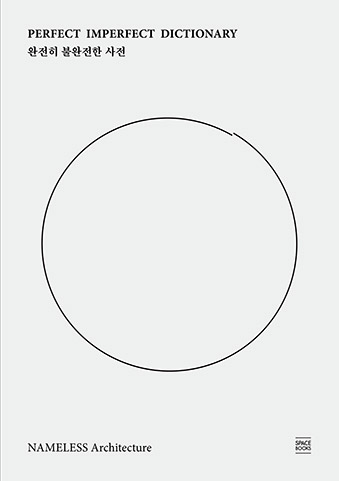
Perfect Imperfect Dictionary (2019)

Model of S Library
Is an Architect Someone Who Builds? Someone Who Designs? Or someone Who Mediates?
Yim Is there something that you think of as important for your projects? Something on which you place particular emphasis, or something that you are not willing to compromise in your work?
Na We seem to focus mostly on experience. Also, we are interested in the sequence beginning with a notion of what we should experience to how should we experience it. We often imagine scenarios of people entering, going in a little further, looking up, going up, and so on. We used to place greater focus on construction in the past, but nowadays we go beyond and contemplate people’s experience, actions, and sensations. This trend began with AeLe House with 9 Rooms. This is a house composed of 16 cruciform structures and 9 rooms, and it features a fully customisable programme per room, regardless of season and situation, with unrestricted movement. However, if it were the case that there was no-one using or living in it, it would end up as a very dull grid space. In that sense, the client has greater influence over the project than the architect herself. We learned that architecture is not created solely in construction.
Kim An example case of a space that turns into something dynamic due to its lack of hierarchy.
Yim Thinking about dynamics is important, but one should also be wary of making something dynamic on purpose. In its final architectural form, it might actually end up restricting the user’s level of autonomy, leaving behind only an intended sequence.
Na And such is the importance of such questions. Is an architect someone who builds? Someone who designs? Or someone who mediates? Sometimes, the architect’s proposals may be insignificant, overly productive, or dull. However, I think it is not the role of the architect to choose. Rather, it is important for an architect to play the role of a mediator. The architect needs to mediate between various circumstances and ponder their possibilities.
Kim I agree. An architect should ponder whether to lie down or lie on it. (laugh)
Yoo We are still thinking about our future directions. We are also presently working on a public project through a design competition, and something quite different might come out of it.
Na We are wondering what publicness means.
Yim NAMELESS Architecture raises a lot of questions. (laugh) If you manage to preserve this attitude into your 90s, perhaps your final work might end up as something that challenges the most fundamental principles of architecture, like Playcloud (2010). I mean, all your projects so far have addressed your responses to fundamental questions.
Na We have two wishes: to be modernist and to continue questioning the essential properties and purposes of architecture. I think that we have reached a stage at which we will continuously switch back and forth between the two to discover new points of mediation.
Kim It feels as though NAMELESS Architecture has grown more resilient. There are bound to be all kinds of things that crop up during the construction stage, and it feels as though you are now much more relaxed than before in your reactions towards such unforeseen happenings. At the same time, it also seems that you have based your work on construction and are looking for new architectural directions.
Yoo There are many building opportunities in Korea for young architects. It is good that we have became more resilient over the course of our numerous projects, but there are times at which we wonder if we have truly thought and pondered our final results enough. We wonder if these results are nothing but the sum of social factors such as clients, site situation, and budget. Perhaps there is a need to first establish our unique language more firmly so we that can pave the way to greater consistency and sturdiness? Or should we go about trying out different approaches first? We go back and forth between these two options.
Chung In terms of artists, there are those with a clear theme, those with a signature medium, or those with a consistent direction despite an apparent lack of connection image-wise. I think NAMELESS Architecture belongs to the latter. I think that it is a team that remains diverse in its materiality and direction.
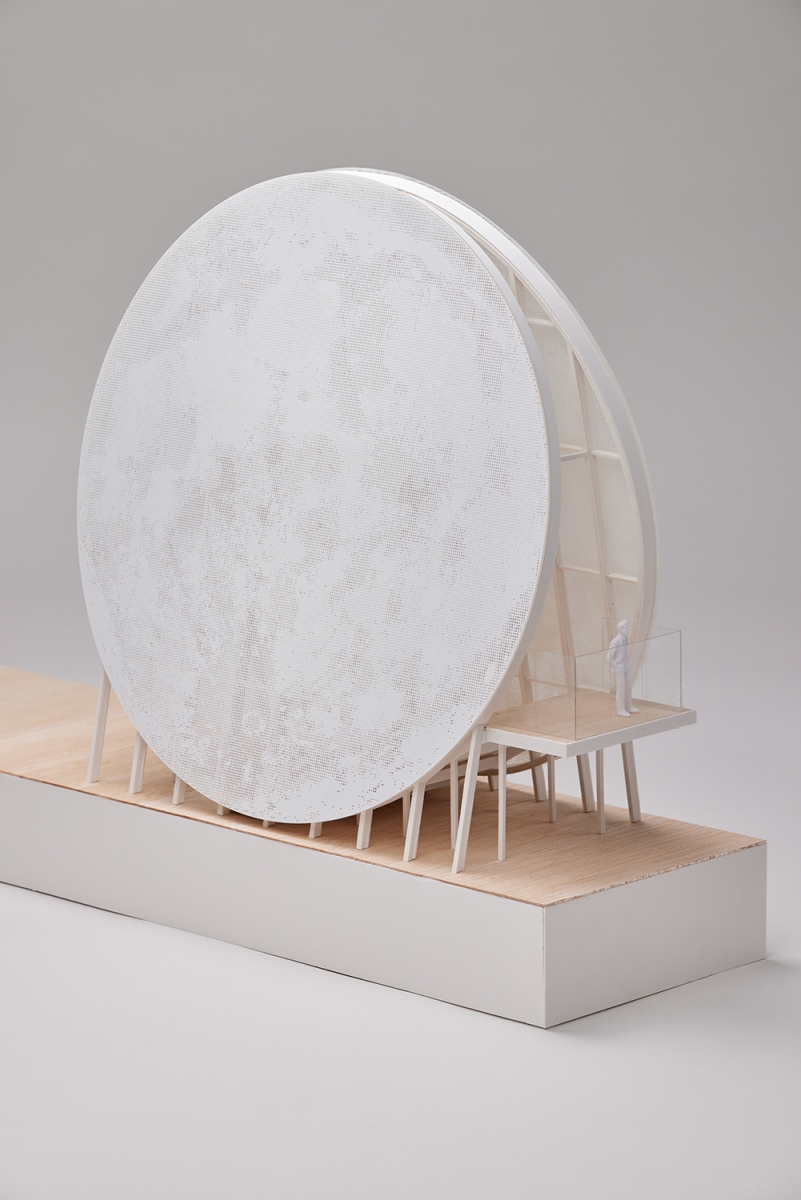
Model of Halo Nodeul
What Is the Antonym for ‘Conceptual’?
Yim I’ve been watching NAMELESS Architecture from the sidelines for over 10 years now, and I was once worried about them. They are extremely serious about architecture, and so I was worried that they might go too deep into idealism, philosophy, and concept, but I feel that their direction is now clearer than ever.
Na Once I had an opportunity to listen to a series of lectures delivered by architects at an event. One architect’s explanation was filled with conceptual narratives, idealistic words, and lofty concepts, while another architect’s explanation was very direct and simple. That said, their words and results cannot be considered proportionate to one another.
Yoo We observed how work of grandiose introductions often turned out to be something lacking in comparison, while a work with a simple introduction turned out to be something of a high quality finish. It was a shocking realisation.
Kim The architectural languages differ from culture, region, and country. This is because all our systems, ranging from the design and construction process, are different from theirs. We cannot compare ourselves with a singular measurement standard—we are simply different. Generations and circumstances continue to change as well. Instead of discussing the practices of certain architects of the previous generation, I think it is more fruitful to consider what to do next.
Yim In fact I have high expectations of NAMELESS Architecture, especially as they work with an international language that can be universally understood. Thinking back, I’m actually amazed that we didn’t mention Gilles Deleuze once during our conversation today. (laugh) We have taken great strides!
Kim I see NAMELESS Architecture’s practice of questioning as something positive, but I’m also wary of substituting the work with language. You don’t need to do it. The work is good, that its message is clear, or that it has many possibilities.
Chung Regarding Growing Forest and Halo Nodeul, it might have been better if one were to remove the words ‘forest’ and ‘moon’. The approach ‘what if a moon rose in Seoul’ is interesting, but to assume you are improving something by naming it sometimes introduces a new limitation. I think NAMELESS Architecture’s narrative would still develop organically if there are more projects like these.
Na In conclusion, narration through architecture.
Yim The reason we keep discussing things like this is because NAMELESS Architecture is undergoing a transitional phase. Hence, we cannot make any judgements of these four projects as of now. A judgement of now can come only through reflection on NAMELESS Architecture’s future projects. We cannot know as of yet whether they will put the finishing touches on their work of the past 12 years or if that they will go forth to a new beginning.






